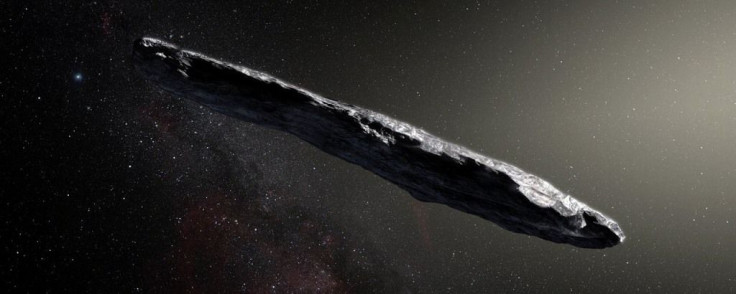New Oumuamua Probe Reveals What We Already Know About ‘Alien Artifact’

The Oumuamua rock, which is not an asteroid and not a comet, was first spotted about 20.50 miles from the sun on Oct. 19, 2017. The majority of theories swirling about the mysterious rock since it was first spotted all point out that it did not result from a natural cosmic phenomenon.
Instead, the source of the rock was attributed to something that is artificial in origin. The Oumuamua rock was thought to be something intentionally hauled to Earth, similar to how the interstellar spaceship in Arthur C. Clarke’s novel “Rendevouz with Rama” came to be.
Speculations about the Oumuamua rock belonging to extraterrestrials were intensified when Harvard astronomers Shmuel Bialy and Avi Loeb published a study in November concluding that, “Oumuamua might be a spacecraft of some sort, perhaps a reconnaissance probe tasked with checking out our neck of the cosmic woods.” They posited that the Oumuamua could be a sailcraft pushed along by starlight.
Now, scientists at the SETI Institute conducted their own reading of the mysterious rock. Using the Allen Telescope Array, they observed Oumuamua as it stayed 170 million miles away, less than the diameter of Earth’s orbit.
Ultimately, the new Oumuamua probe conducted by scientists at the SETI Institute aims to measure artificial radio transmissions. Radiowaves have long been believed to be the form of communication that aliens will use or have been using in their attempt to communicate with Earth.
“We were looking for a signal that would prove that this object incorporates some technology – that it was of artificial origin… we didn’t find any such emissions, despite a quite sensitive search," Gerry Harp, one of the SETI scientists, said.
Nonetheless, he explained that the group remained optimistic that the result of their probe “doesn’t conclusively” negate the possibility of the Oumuamua rock coming from a non-natural origin.
In fact, the rock’s elongated shape and the fact that it has no “coma” intensified the hypothesis that Oumuamua is neither an asteroid nor a comet, the scientists wrote in the study to be published in the February 2019 issue of Acta Astronautica. Coma is the composition of ice and comet dust that envelope the nucleus of a comet. A coma is formed when it passes near the sun during its elliptical orbit.
A week after Oumuamua was seen, NASA scientists tried to spot it using the agency’s Spitzer Space Telescope. The result of this observation was only published a year later, in November of this year, as the rock was too faint for the NASA equipment to detect.
The scientists involved in this NASA observation theorized that Oumuamua was produced by outgassing which happens when gas moved like a thruster that slowly propelling the rock toward the direction of Earth. This suggested that Oumuamua could be smaller than comets in the solar system, but is composed of frozen gases just like the comets.
© Copyright IBTimes 2025. All rights reserved.





















